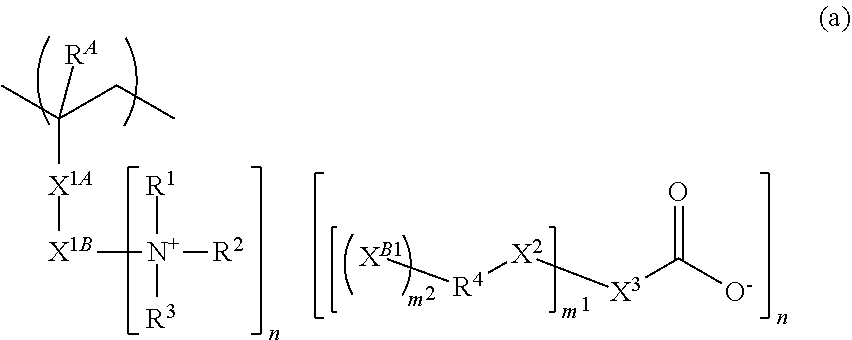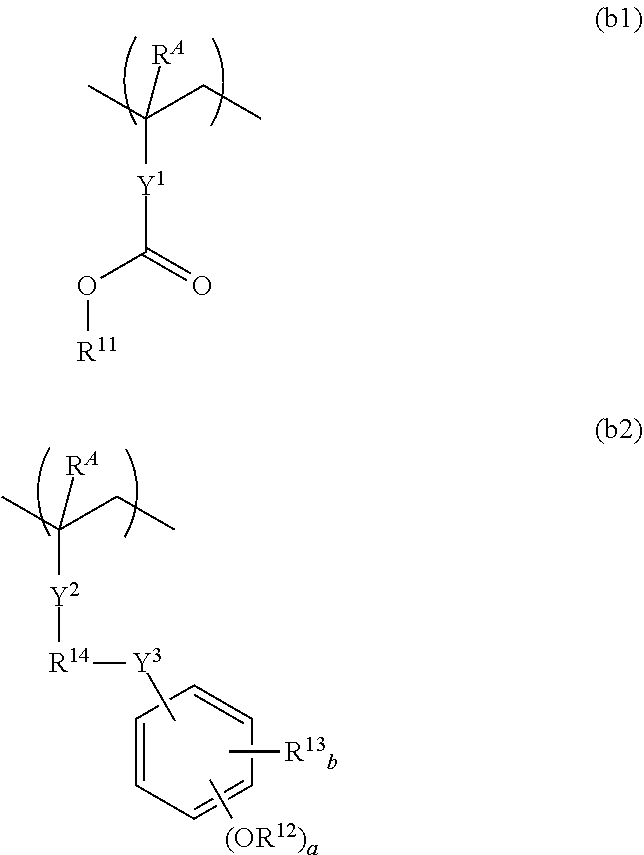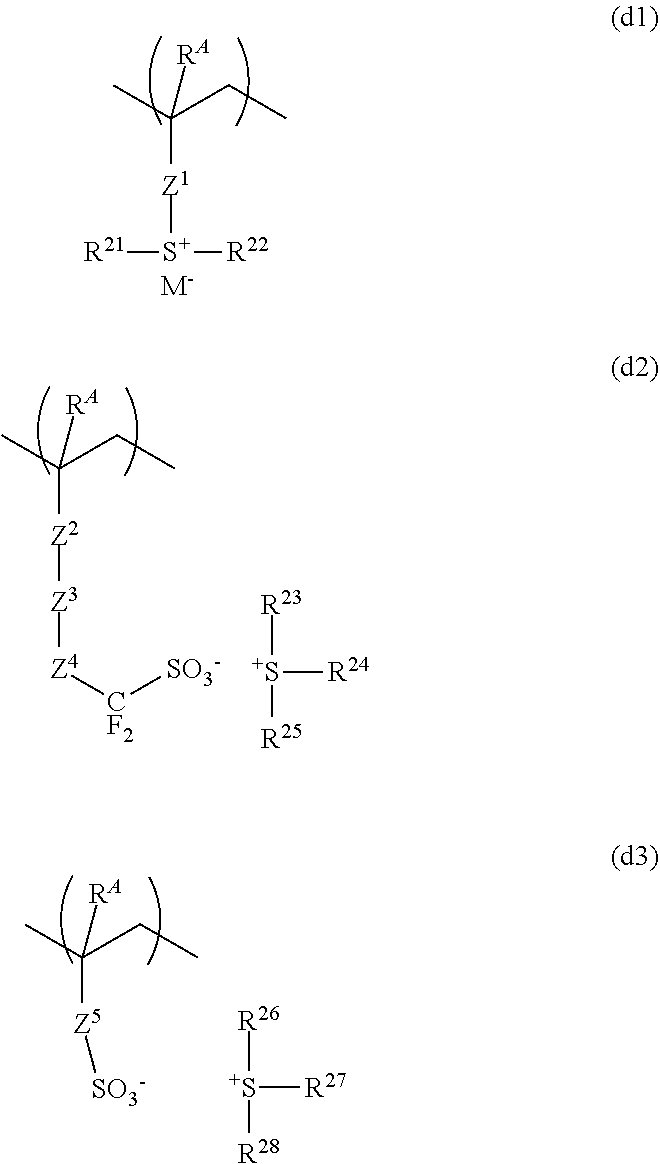Positive resist composition and patterning process
a composition and resist technology, applied in the field of positive resist composition and patterning process, can solve the problems of reducing the resolution of two-dimensional patterns such as hole patterns, sensitivity lowering, etc., and achieve the effects of high resolution, high sensitivity and enhanced decomposition efficiency of acid generators
- Summary
- Abstract
- Description
- Claims
- Application Information
AI Technical Summary
Benefits of technology
Problems solved by technology
Method used
Image
Examples
synthesis example 1
[0187]Synthesis of Polymer 1
[0188]A 2-L flask was charged with 0.8 g of Monomer 1, 8.4 g of 1-methyl-1-cyclopentyl methacrylate, 5.4 g of 4-hydroxystyrene, and 40 g of tetrahydrofuran (THF) as solvent. The reactor was cooled at −70° C. in nitrogen atmosphere, after which vacuum pumping and nitrogen blow were repeated three times. The reactor was warmed up to room temperature, whereupon 1.2 g of azobisisobutyronitrile (AIBN) was added. The reactor was heated at 60° C., whereupon reaction ran for 15 hours. The reaction solution was poured into 1 L of isopropyl alcohol (IPA) for precipitation. The precipitated white solid was collected by filtration and vacuum dried at 60° C., yielding Polymer 1. Polymer 1 was analyzed for composition by 13C- and 1H-NMR and for Mw and Mw / Mn by GPC.
synthesis example 2
[0189]Synthesis of Polymer 2
[0190]A 2-L flask was charged with 0.7 g of Monomer 2, 7.3 g of 1-methyl-1-cyclohexyl methacrylate, 5.0 g of 4-hydroxystyrene, 11.0 g of PAG Monomer 2, and 40 g of THF solvent. The reactor was cooled at −70° C. in nitrogen atmosphere, after which vacuum pumping and nitrogen blow were repeated three times. The reactor was warmed up to room temperature, whereupon 1.2 g of AIBN was added. The reactor was heated at 60° C., whereupon reaction ran for 15 hours. The reaction solution was poured into 1 L of IPA for precipitation. The precipitated white solid was collected by filtration and vacuum dried at 60° C., yielding Polymer 2. Polymer 2 was analyzed for composition by 13C- and 1H-NMR and for Mw and Mw / Mn by GPC.
synthesis example 3
[0191]Synthesis of Polymer 3
[0192]A 2-L flask was charged with 0.5 g of Monomer 3, 8.4 g of 1-methyl-1-cyclopentyl methacrylate, 3.6 g of 3-hydroxystyrene, 11.9 g of PAG Monomer 1, and 40 g of THF solvent. The reactor was cooled at −70° C. in nitrogen atmosphere, after which vacuum pumping and nitrogen blow were repeated three times. The reactor was warmed up to room temperature, whereupon 1.2 g of AIBN was added. The reactor was heated at 60° C., whereupon reaction ran for 15 hours. The reaction solution was poured into 1 L of IPA for precipitation. The precipitated white solid was collected by filtration and vacuum dried at 60° C., yielding Polymer 3. Polymer 3 was analyzed for composition by 13C- and 1H-NMR and for Mw and Mw / Mn by GPC.
PUM
| Property | Measurement | Unit |
|---|---|---|
| wavelength | aaaaa | aaaaa |
| wavelength | aaaaa | aaaaa |
| reaction temperature | aaaaa | aaaaa |
Abstract
Description
Claims
Application Information
 Login to View More
Login to View More - R&D
- Intellectual Property
- Life Sciences
- Materials
- Tech Scout
- Unparalleled Data Quality
- Higher Quality Content
- 60% Fewer Hallucinations
Browse by: Latest US Patents, China's latest patents, Technical Efficacy Thesaurus, Application Domain, Technology Topic, Popular Technical Reports.
© 2025 PatSnap. All rights reserved.Legal|Privacy policy|Modern Slavery Act Transparency Statement|Sitemap|About US| Contact US: help@patsnap.com



